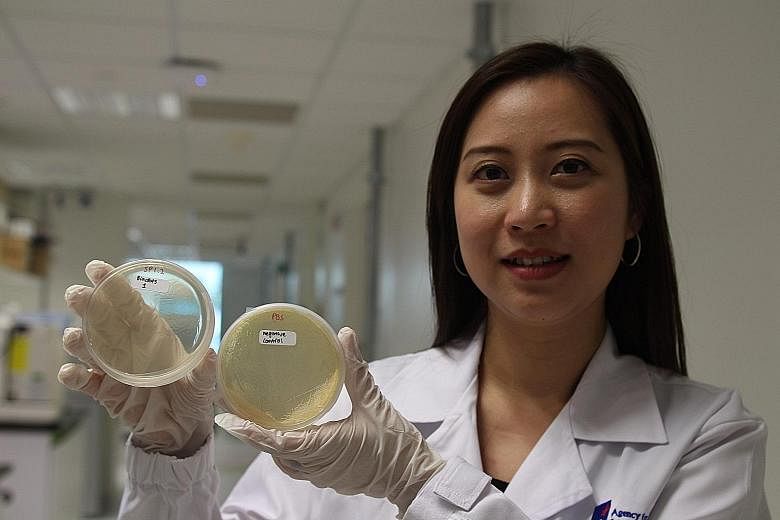A scientist here is harnessing the potent germ-killing ability of silver to kill bacteria, which is becoming increasingly resistant to current drugs.
Her new invention has a wide range of applications, from surface coatings for medical equipment, to topical creams and antibacterial sprays.
Agency for Science, Technology and Research (A*Star) research scientist Tan Yen Nee, who works at the Institute of Materials Research and Engineering, led the development of what she calls a bio-silver hybrid material.
Because silver can also be toxic, she surrounds tiny particles of silver with a DNA "cage" to control the rate at which the particles release silver ions - the highly effective weapons against bacteria.
These particular silver particles are about 1,000 times smaller than the silver particles currently used for antibacterial purposes. Controlling the release rate allows the silver to work against bacteria, while leaving human cells unharmed.
Users will know when the material has run out by simply shining ultraviolet light on it. Although faintly brown in normal light, its bright fluorescent hue - which could be blue, orange or green, for example - dulls with use.
Although people have known of silver's antibacterial properties for thousands of years, its toxicity has limited its use.
Explained Dr Tan, who is also an adjunct assistant professor at the National University of Singapore's (NUS) chemistry department: "Silver disrupts essential biochemical pathways in both bacteria and human cells."
Another more dramatic example of its effects on humans is its ability to permanently turn skin grey-blue, a condition known as argyria.
Dr Tan's team filed a provisional patent for the bio-silver hybrid material in 2015.
She said that it has a wide range of uses, and could possibly hit the market in a few years in non-medical applications such as antibacterial sprays. It will, however, take longer for medical applications such as coatings for surgical tools or antibacterial dressings.
Commenting on the effort, Professor Paul Tambyah from the NUS Yong Loo Lin School of Medicine's medicine department said: "This is an interesting development of a technology that many have worked on for years."
Prof Tambyah, who is also a senior consultant at the National University Hospital's Division of Infectious Diseases, added: "If the technology manages to overcome some of the obstacles previously identified, including maintaining a persistent effect against different kinds of bacteria and also not having too many side effects on humans, it would be a major contribution to the prevention of infections and control of antimicrobial resistance."
For those who may still be worried about silver's toxicity, Dr Tan's team is also developing a similar material that uses purely biological molecules.
This is just as effective in killing bacteria, and could even be more powerful than her bio-silver hybrid material against certain types of bacteria.
Jose Hong

